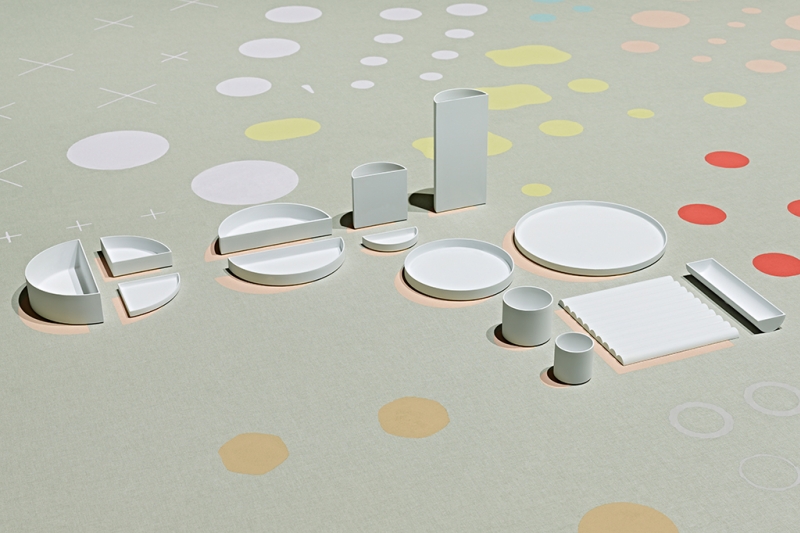Hataman Touen & Scholten & Baijings
In twenty-seven dishes Scholten & Baijings celebrate the beauty of 400 years of Arita porcelain and demonstrate what a rich source of inspiration traditional Aritaware can offer contemporary design. Exploring Arita’s outstanding examples of hand-painting, they reviewed hundreds of pieces and came across countless techniques showing incredible refinement.
Almost every dish is carefully hand-painted by the skilled craftspeople in Arita. Hand-painting with this level of sensitivity is an especially remarkable talent of Arita and particular to the Hataman Touen pottery. Scholten & Baijings have chosen to celebrate this unique skill but rather than use recognisable imagery as would be customary, Scholten & Baijings have instead applied patterns that are abstractions of traditional motifs.
Scholten & Baijings studied Arita’s historical porcelain collections, systematically rummaged through books, museums and the archives of their collaborating pottery, Hataman Touen, making note of the finest examples of hand-painted Aritaware. Long forgotten techniques were rediscovered and later brought back to life in the final works. The designers deconstructed their selected examples, reducing them to single components. They dissected, distilled, abstracted and then reassembled the imagery to leave them with a palette of shape, colour and technique.
All the dishes have origins in actual historical forms. But when these were superimposed on one another – by combining two, or even three outlines – complex new shapes emerged that could only be produced with the help of the latest technology. Supported by the Saga Ceramics Research Laboratory in Arita, the highly detailed moulds were produced by 3D printing and 5 Axis CNC milling.






